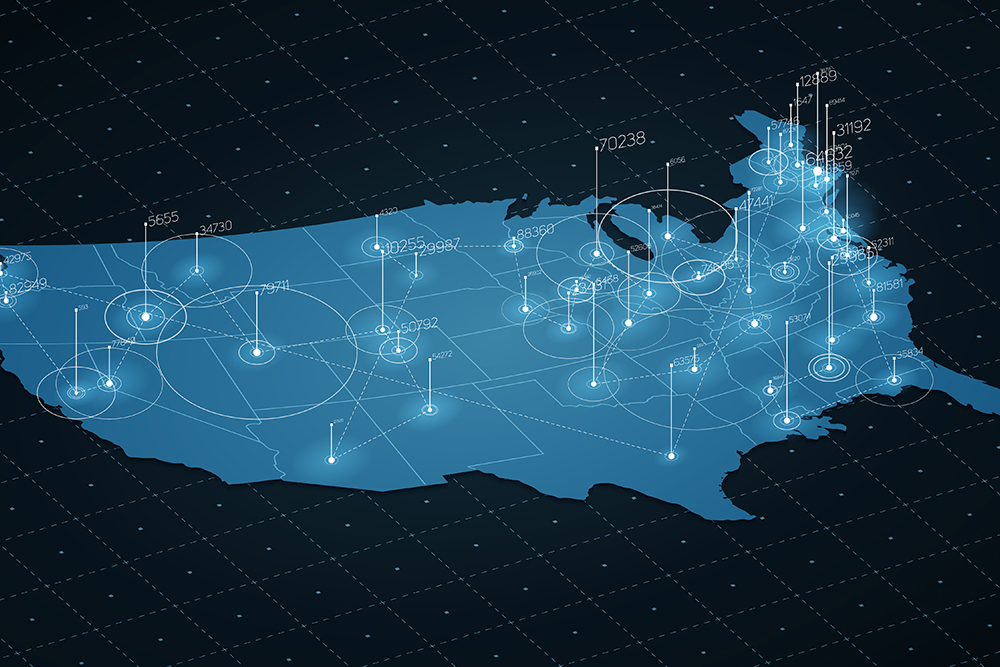With more and more Americans working from home, remote work has become the new normal. For the most part, organizations have been able to adapt in the months since many governments shut down nonessential businesses. Thanks to modern technologies like software-as-a-service (SaaS) and easy-to-access cloud-native infrastructure, many employees are working well from anywhere and going about “business as usual” while following social distancing guidelines.
Yet, many of us recognize that there is something valuable in the face-to-face interactions and culture of the office. To that end, many businesses are planning for a modified return to work and are thinking through how to get employees back into the office safely.
For HR professionals, this presents both an unprecedented, high-stakes challenge and an opportunity. The modern technology that made remote work possible for many, and the data it creates, can also assist in designing a successful return-to-work strategy. Most HR departments now have access to a broader array of data than ever before, and analyzing these data will be essential for leading the business through this effort.
All HR departments should have access to basic demographic and location data and can augment those data while ensuring privacy guidelines to better understand which employees are high risk and should not be returned to the office first. Demographic data can be combined with geospatial data and productivity considerations to provide a more comprehensive overview.
Once combined, these data can be synthesized into an overall risk score assigned to each individual worker. Ultimately, this quantitative data, paired with qualitative knowledge, will be your best resource when making decisions that pertain to the workforce.
Mapping Employee Networks
Decision-makers should consider mapping employees to minimize risk when returning their workforce to the office. Of course, one of the first considerations will be office space and how many employees can safely interact in a reconfigured space, but another thing to consider is transportation. This includes how each employee travels between home and the office and whether it could be done more safely.
By tracing logistical data, HR can see how many employees use mass transit and evaluate risk. In light of these concerns, many are proposing to relinquish large office spaces in metropolitan areas and instead invest in smaller, more local offices.
Through geospatial data analysis of workers’ home addresses, we can determine where these smaller offices should be located, helping employees avoid large public spaces and lower risk of exposure.
Tracking for Productivity In and Outside the Office
Another factor HR professionals should be tracking is workforce productivity. Somewhat unsurprisingly, businesses that were tracking this before the pandemic have seen an increase in productivity with work from home.
In fact, a recent Gallup poll found 59% of remote workers would prefer to work remotely as much as possible, even after local economies open up. By comparison, only 41% were eager to return to their work commute and office routine. By evaluating the productivity of your remote workforce, you might find a large percentage work better from home, and business leaders may be prompted to downscale their office premises for cost savings.
Taking Roles, Responsibilities, and Personality into Consideration
HR can also take an employee’s role into account when planning for who should return to the office, although it’s more qualitative in nature and not a perfect science. Personnel in the more customer-facing functions of a business can be more outgoing and gregarious in their personality by nature of the work they do.
Additionally, the conversational and creative nature of their work makes face-to-face collaboration important to their role and thus productivity. However, with social distancing guidelines in place, it should also be considered how many people will be able to fit into a conference room at a time. If it’s only two or three, that might not serve a creative, in-person discussion, meaning there’s only risk and little reward.
On the other hand, introverted workers may more frequently reside in the back-office functions; they are independent workers, but this doesn’t mean they necessarily should return to work last. On the contrary, introverted personalities typically rely on nonverbal cues and casual encounters at the office whereby they can get the answers they need without setting up a formal meeting. Roles, responsibilities, and regulations need to be considered comprehensively, in addition to risk scores, when prioritizing which workers return to the office first.
A safe return-to-work plan will incorporate input from HR, as well as other departments and staff, to help leaders make the right decision for their workforce. But as fellow HR professionals, we understand that HR is best-equipped to be the driving force in these discussions.
There are many data-driven ways to tackle the return-to-work challenge, and all center on HR data. The combination of these qualitative and quantitative factors is what makes modern HR work valuable to any organization and ultimately results in clearer decision-making—the safe return to work is just the start.
Tom Ricks is Senior Director of HR Systems and People Analytics at Qlik. In this role, he’s focused on aligning future-focused global HR strategies and analytics solutions for Qlik’s stakeholders.
Ricks has more than 20 years of experience in recruiting and helping HR departments adopt data-driven recruiting processes, which he couples with a deep understanding of organizational culture and transformational leadership.
He helps his clients transform from simple reporting to a smarter use of analytics, enabling companies and managers to better track and predict employees’ performance, make better-informed talent decisions, and have the opportunity to implement advanced workforce planning. Connect with Qlik on Twitter: @Qlik.
The post Why HR Data Should Be Leading the Return to Work appeared first on HR Daily Advisor.
